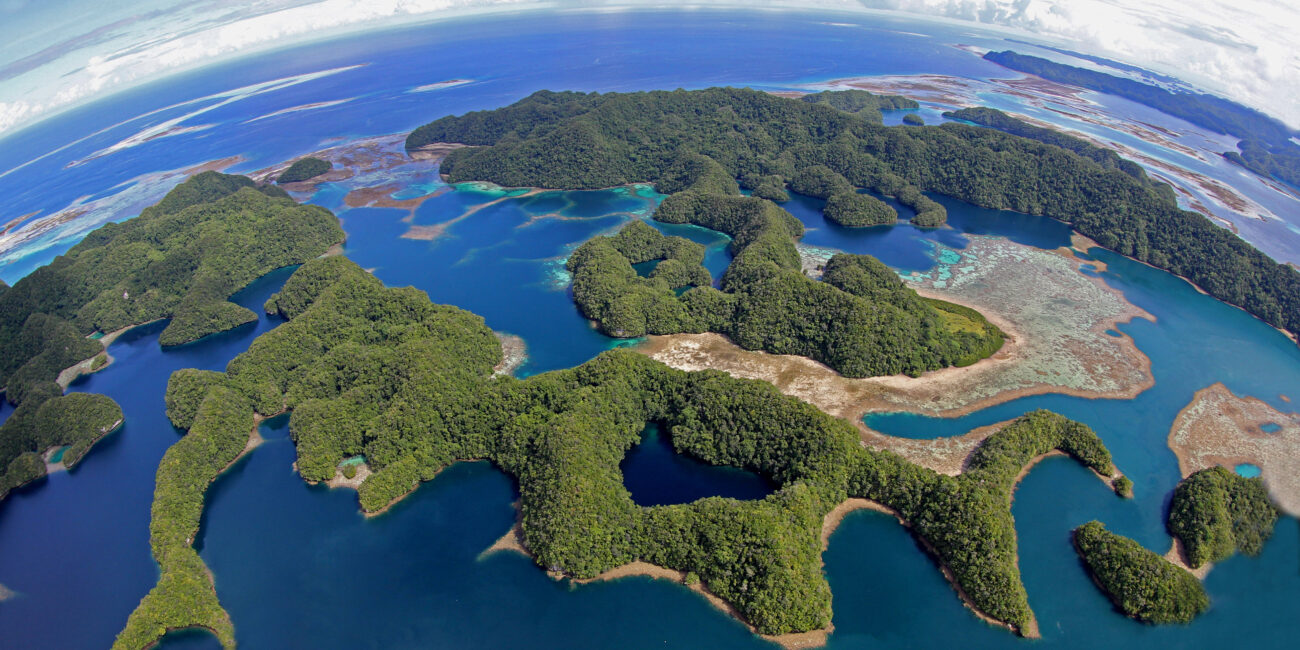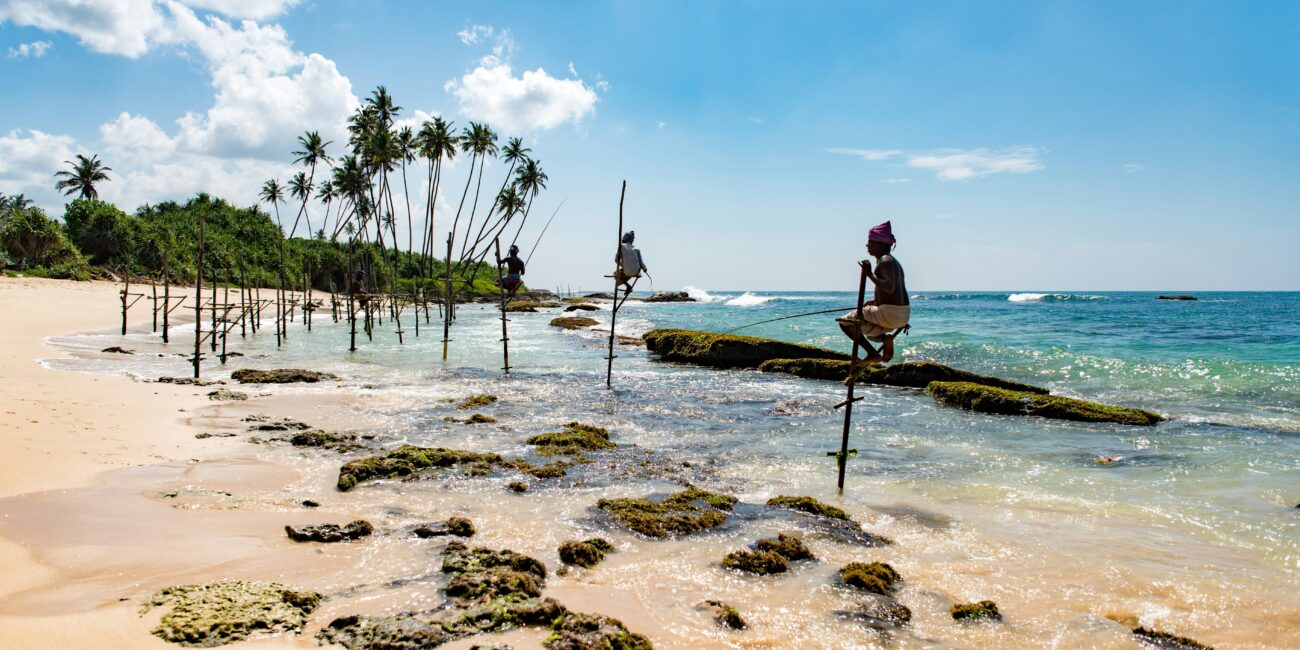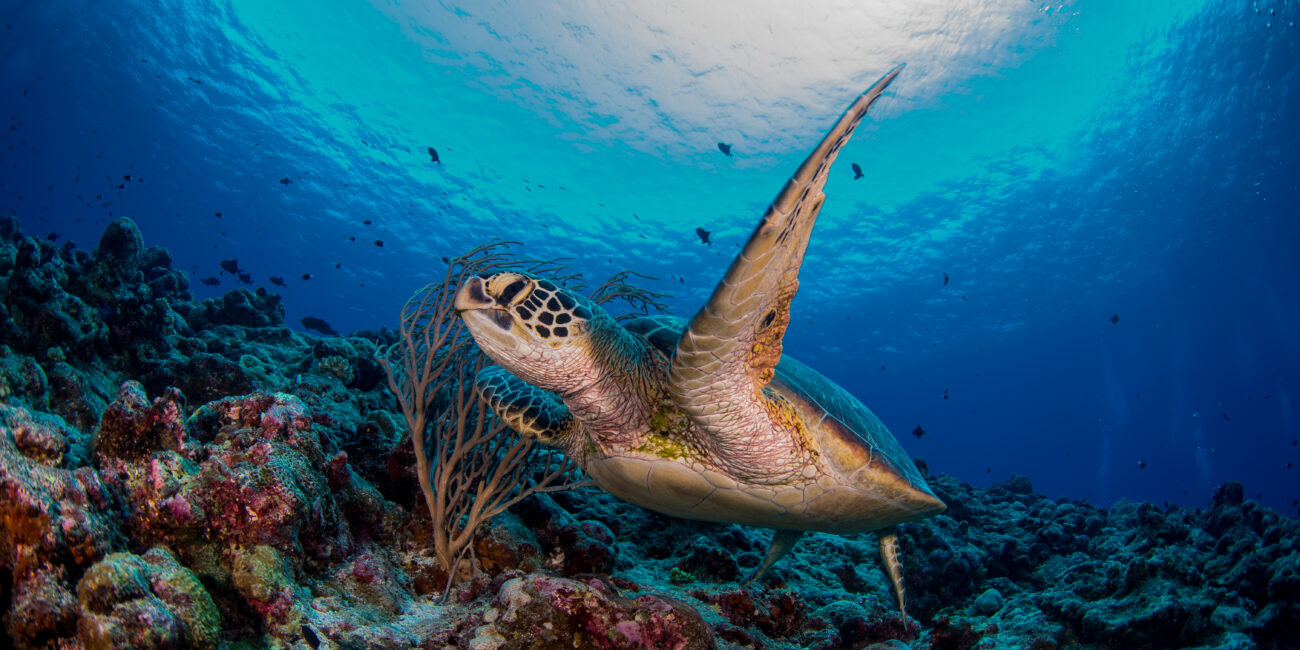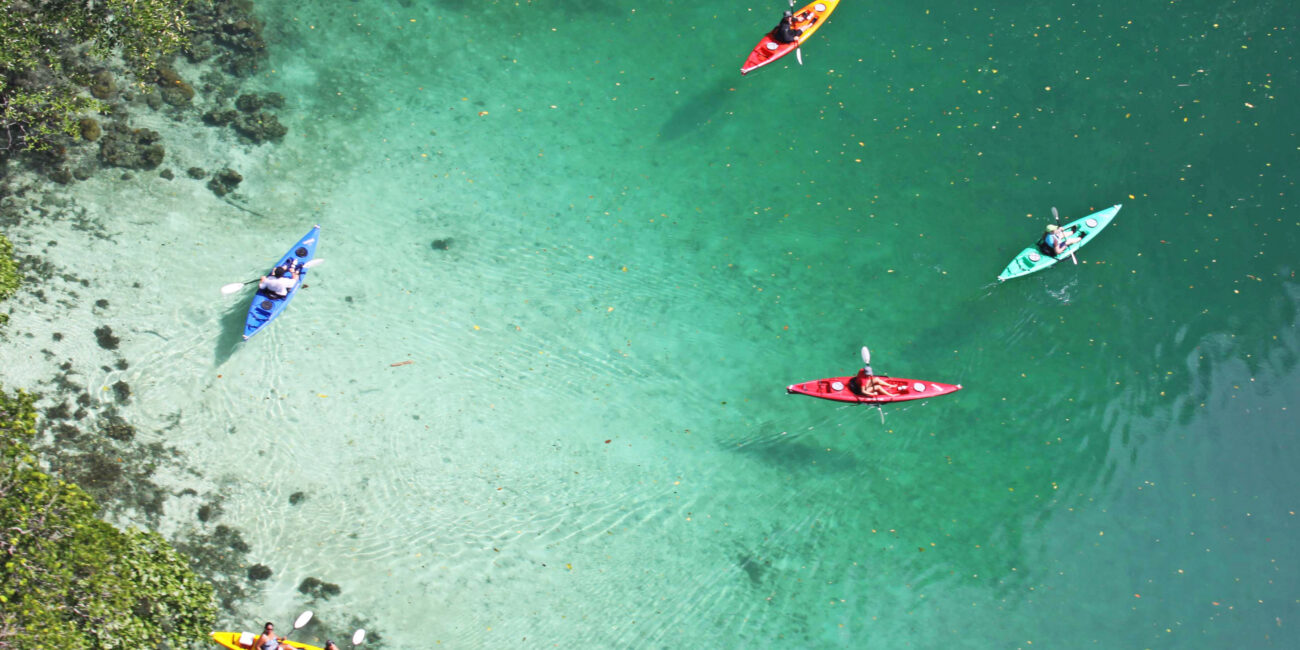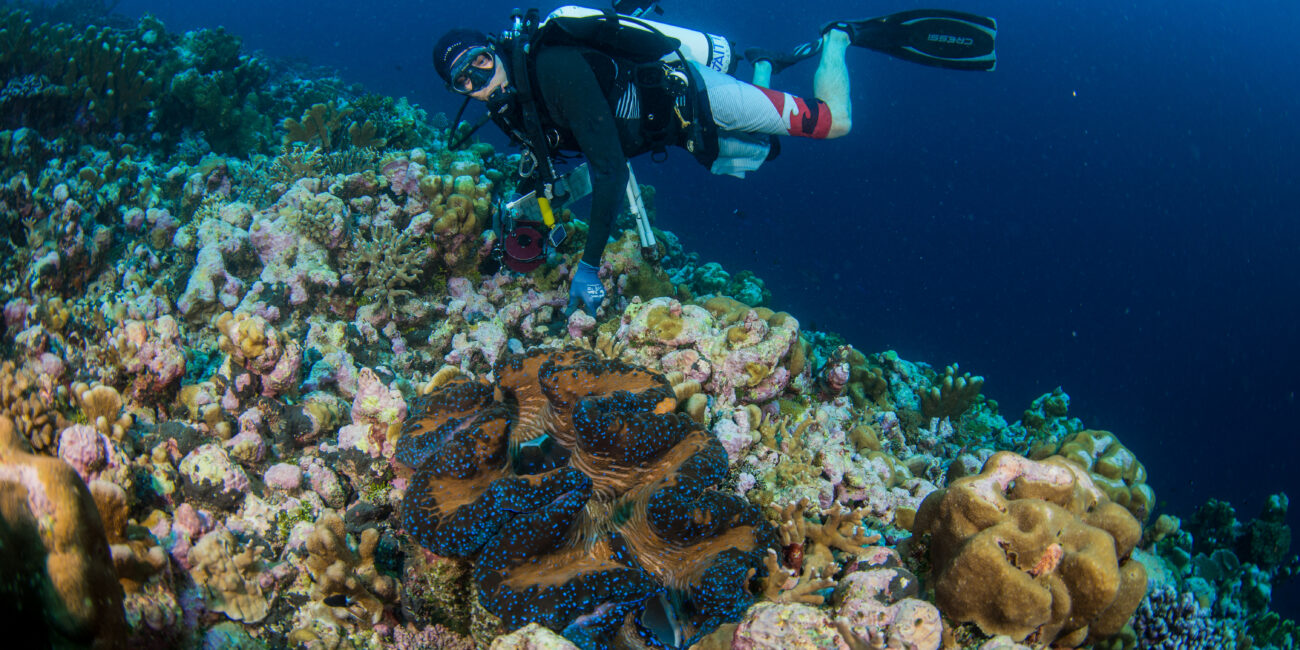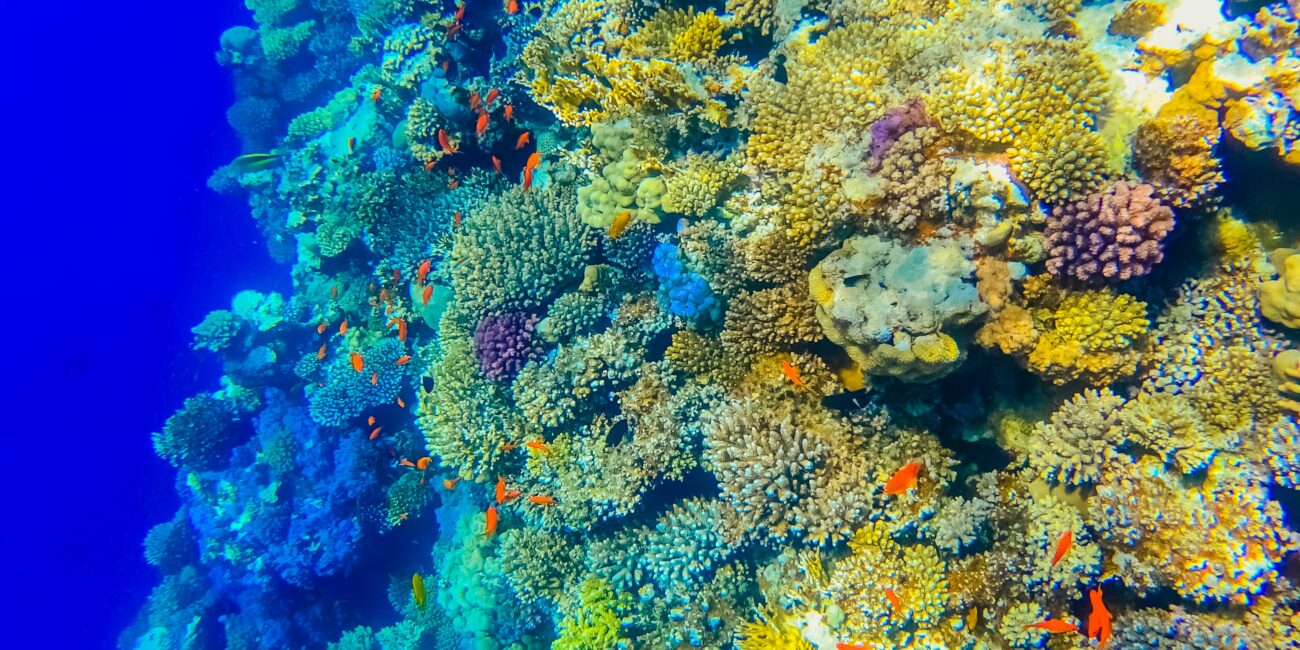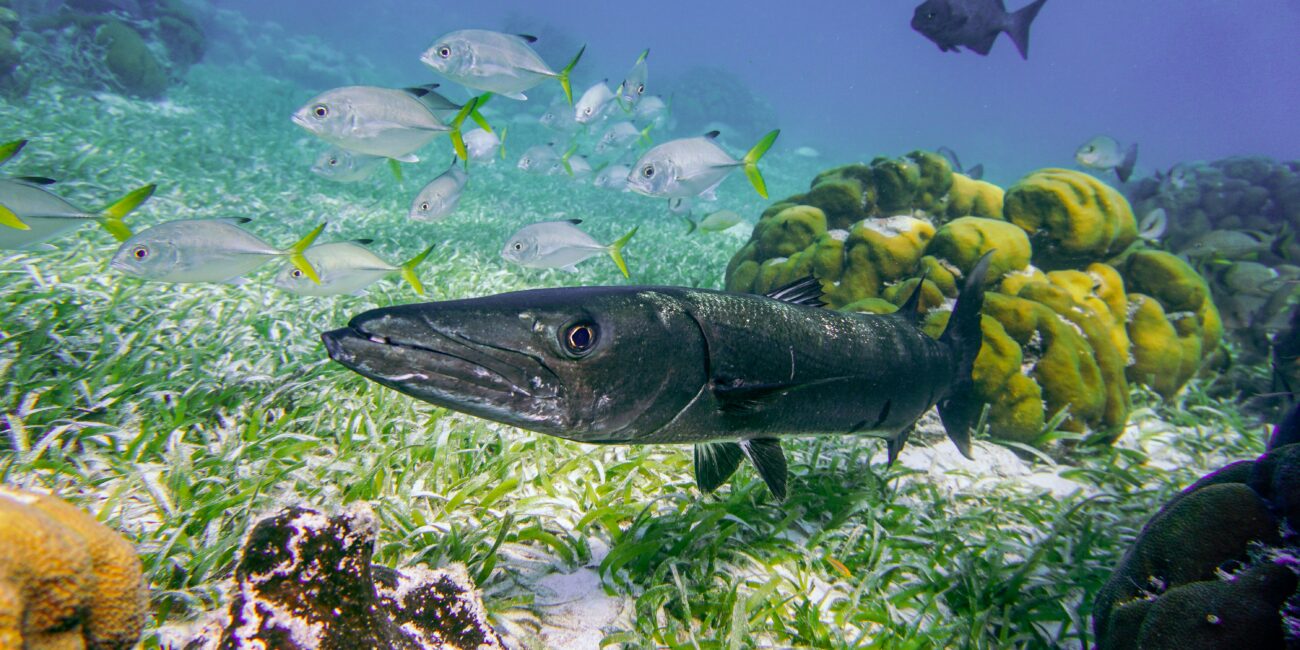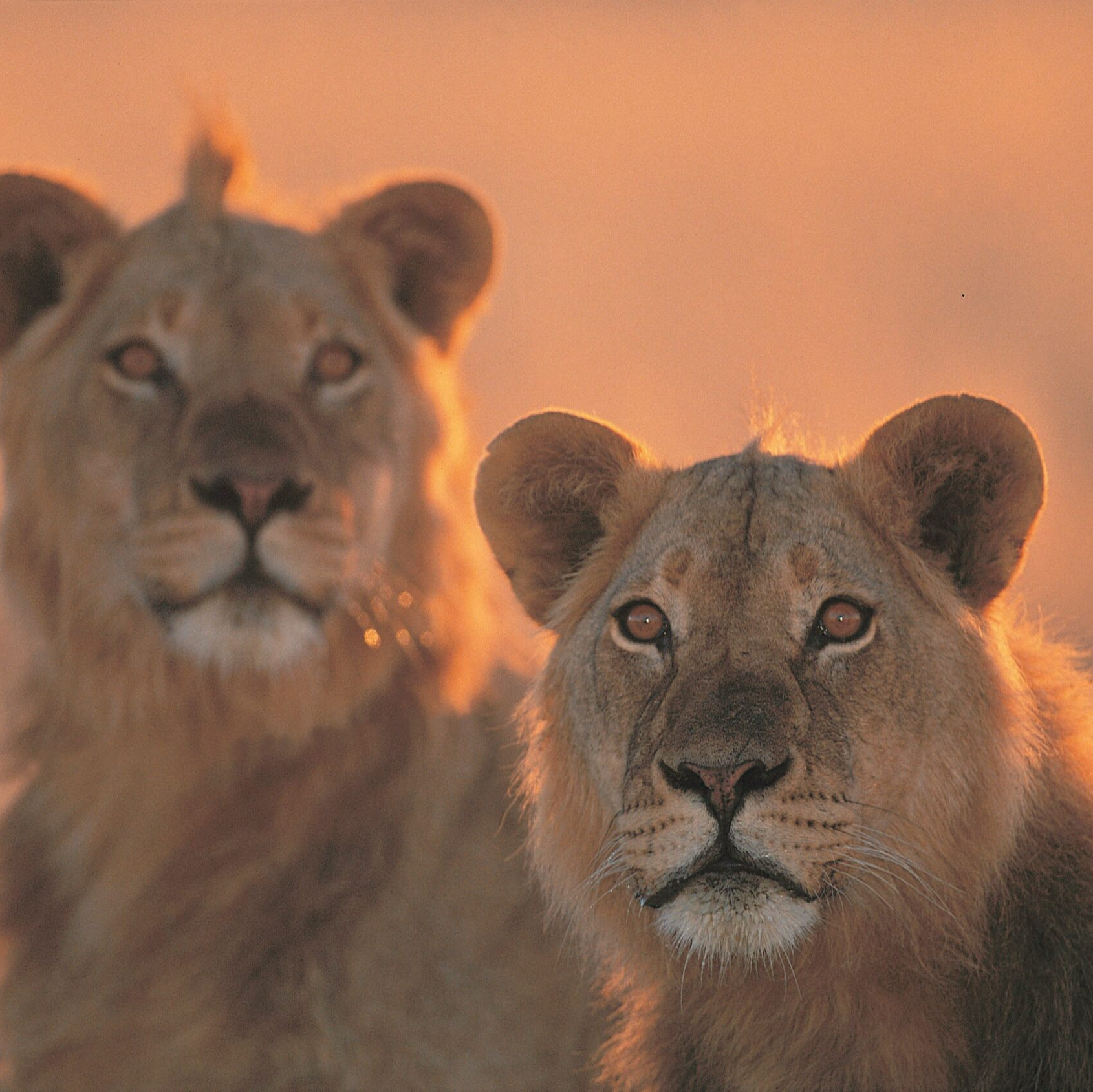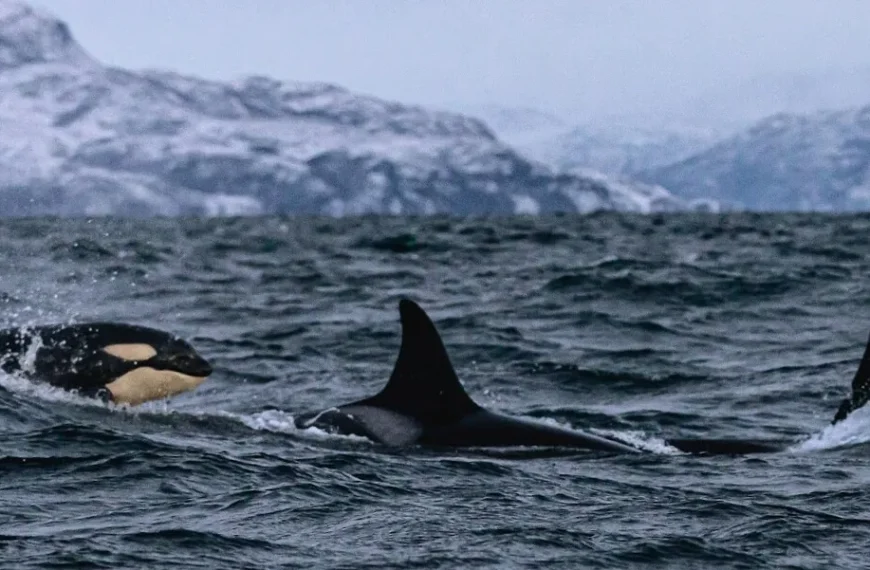Oceans act as earth’s lifeblood. Covering more than 70% of the planet they play a critical role in regulating the climate, supporting biodiversity and sustaining life itself.
From driving weather patterns that redistribute heat, to acting as carbon sinks and helping to mitigate the effects of climate change, oceans not only provide sustenance and livelihoods for millions of people worldwide, but also harbor an immense diversity of life, right from microscopic plankton to immense blue giants, the largest mammals on our planet. The health of our planet is irrevocably linked to the health of our oceans, making their preservation and sustainable management imperative for the wellbeing of present and future generations.
In this field report, we shine a light on key marine ecosystems around the world and their opportunities for under-water immersion – from diving safaris along the Belize Barrier Reef to snorkelling and kayaking adventures within the Palau Archipelago. Read on to be inspired for your next blue vacation.
ISLAND-OCEAN ECOSYSTEMS IN PALAU
Micronesia
Indigenous knowledge has long understood that everything is interconnected. A healthy island ecosystem benefits the surrounding oceans and marine habitats. Holistically restoring islands also enables support of local communities, their livelihoods and economies. It provides safe habitats for endangered species and improves biodiversity, whilst also enhancing climate resilience.
In Palau, communities are working to restore and rewild the archipelago – home to plentiful marine flora and fauna, including 14,000 species of reef fish, 7 out of 9 of the world’s giant clam species and numerous endangered species such as the dugong and hawksbill turtle.
Here, traditional chiefs have the ability to implement a “bul”, resembling an edict or directive that sets conditions for the management of an area. This means that historically, Palau Chiefs have been able to implement traditional controls on land and marine resources, enabling areas to be closed off for a period of time if the resources are threatened. Whilst a “bul” can be lifted following the recovery of a resource, in most other ways it resembles a marine protected area. These conservation ethics have long instilled environmental stewardship in Palauans, and with a remarkable 80% of the nation’s maritime territory protected, it is no surprise that Palau’s protected ocean environments harbour a wealth of biodiversity and wonder.
Whilst Palau has implemented a sustainable tourism model with low-impact visitor activities, its rich marine habitats can be explored during technicolour kayaking, snorkeling, and diving adventures – offering access to stalagmite and stalagtite-filled underwater caverns, lagoons sheltered by cathedral-like limestone walls and filled with millenia-old coralline formations, and sites like the renowned Jellyfish Lake, often home to millions of stingless golden jellyfish that travel through the enclosed lake on a daily migration that follows the sun.
Between 13th-24th September 2024 we will host a small group in Palau to discover its island-ocean ecosystems and the immensity of life they sustain.
Find out more here.
Register your interest here.
To speak with an Impact Travel Specialist about creating a bespoke experience in Palau, please reach out to book a meeting with the team here.
"What happens on land, happens at sea." Palauan Proverb
BLUE BELIZE
Central America
Belize’s marine environments are among the most diverse and pristine in the world, boasting vibrant coral reefs, rich mangrove forests and expansive seagrass meadows. Situated along the Mesoamerican Barrier Reef System, the second-largest barrier reef on the planet, Belize’s coastal waters teem with an astounding array of marine life, from colourful reef fish to sea turtles, manta rays, and the critically endangered dugong.
Not only is this nation bursting at the seams with marine biodiversity, it demonstrates an exemplary model of marine conservation, having recognised the importance of its ocean ecosystems for biodiversity conservation, sustainable fisheries and tourism.
One of the most significant steps Belize has taken to protect its marine environments has been with the establishment of marine protected areas (MPAs) which cover approximately 36% of Belize’s territorial water and encompass an spectacularly diverse range of habitats.
In addition to MPAs, Belize has implemented regulations to address threats to marine ecosystems, such as overfishing, pollution and habitat destruction, and community involvement and stakeholder engagement play a crucial role in their management. Local fisherfolk, conservation organizations, such as Turneffe Atoll Sustainability Association, government agencies, and other stakeholders collaborate to develop and implement management plans, monitor marine resources, and enforce regulations. This participatory approach has long fostered stewardship and empowered Belize’s coastal communities to take an active role in conserving their marine heritage.
The Belize Barrier Reef System, a UNESCO World Heritage Site designated in 1996, encompasses seven marine protected areas along the barrier reef and is considered a global hotspot for marine biodiversity. Within this system, Hol Chan Marine Reserve and Turneffe Atoll stand out as some of Belize’s most special marine environments, offering snorkeling, diving and catch-and-release fishing opportunities within their thriving underwater ecosystems.
Between 21st February – 1st March 2025, we will host a small group in Belize to learn alongside the nation’s conservation pioneers whilst exploring its pristine oceans.
Find out more here.
Join the journey here.
SRI LANKA
South Asia
Located in the Indian Ocean, Sri Lanka’s marine environments range from coral reefs and mangroves to seagrass beds and deep-sea trenches. Its coastline coral reefs, compiled of abundant coral species, offer coastal protection and support the fisheries vital for local communities, all whilst sheltering and sustaining a myriad of sea turtles, fish and marine mammals.
The Bar Reef Marine Sanctuary, located off the northwest coast of Sri Lanka, is the country’s oldest and largest marine protected area, attracting snorkelers, divers and researchers with its vibrant coral reefs and diverse marine life. The east coast’s Pigeon Island National Park and southwest coast’s Hikkaduwa National Park also offer superb marine recreation in line with the safeguarding of their fragile ecosystems.
In addition to MPAs, Sri Lanka has implemented regulations to address overfishing, habitat destruction and pollution, whilst local communities, conservation organizations, government agencies, and the private sector continue to collaborate to develop and implement management plans, monitor marine resources, and enforce regulations.
Between 23rd November – 1st December 2024, we will host a small group in Sri Lanka to undergo an environmental odyssey across the nation’s shorelines, islands and oceans.
To speak with an Impact Travel Specialist about creating a bespoke experience in Sri Lanka, please reach out to book a meeting with the team here.
